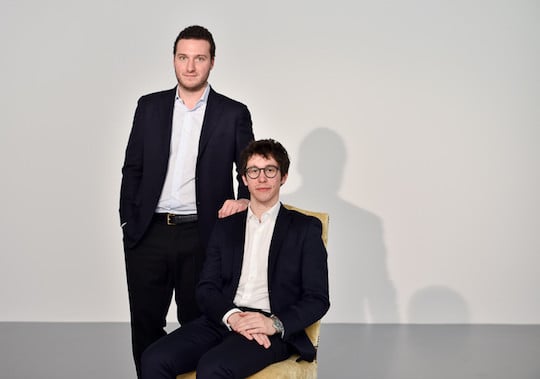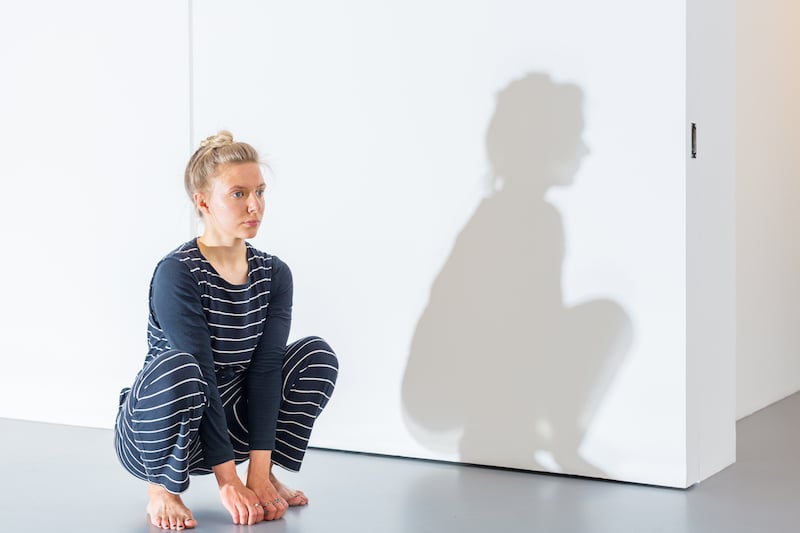Art & Exhibitions
Joseph Nahmad Opens Up About His Gallery’s First Show, Curated by Francesco Bonami
It features 30 artists in 30 days.

Photo: Nick Harvey. Courtesy Nahmad Projects.
It features 30 artists in 30 days.

Henri Neuendorf

The latest member of the Nahmad dynasty to enter the art business, Joseph Nahmad, will inaugurate Nahmad Projects, his new gallery with business partner Tommaso Calabro in London’s Mayfair district, with a performance art show.
Starting in style, the gallery’s inaugural exhibition is curated by critic and curator Francesco Bonami and is inspired by enigmatic performance artist Tino Sehgal. For the show, titled I am NOT tino sehgal, the curator invited artists to submit performance proposals inspired by Sehgal’s work in a global open call. Beginning June 9, there will be 30 new performances in 30 days staged at the gallery by artists from the UK as well as Russia, Finland, Poland, and Korea, and other countries.
artnet News sat down with Nahmad, Calabro, and the Greek artist Tomàs Diafas, who will perform at the opening, to discuss how emerging art fits into Mayfair, Sehgal’s legacy, and what to expect from the gallery in the months to come.

The shortlisted artists for I am NOT tino sehgal. Photo by Benedict Johnson, courtesy Nahmad Projects, London.
Why are you choosing to focus on emerging art?
Tommaso Calabro: Our aim at Nahmad Projects is to look to the future, to look at what will happen next. The idea of focusing on emerging art was natural, as it allows us to break the status quo. However, our vision does not simply concern emerging art. Rather, we will try to see and present things differently. A contemporary artwork is much more than an artwork realized today, in 2016.
Being contemporary is a perspective that we have to revise and challenge daily. It is a way of seeing things. And sometimes a Picasso can be much more contemporary than a canvas executed yesterday.
What kind of exhibitions can we look forward to at the gallery?
Joseph Nahmad: We aim with this project space to create shows that challenge the viewer to question what art is, and how they perceive it. We aim to make this gallery a platform for both emerging and recognized artists and curators who want to make an impact on London’s contemporary art scene.
Situated in Mayfair, we are going against the grain of the traditional galleries in the area, but hope to offer the audience an experience when they visit the gallery.

Tuuli Malla I Am a Cat (2016). Photo by Benedict Johnson, courtesy Nahmad Projects, London.
What is the role of performance art?
Artist Tomàs Diafas: I’d say that my practice is an open-ended one that draws in energy by involving the public in the creative process with the aim of reaching a point where we overcome “reality” together and exchange new kinds of information.
I think performance art has to do with who you are as a human being and not as an artist. You cannot pretend, you are not offering a ready-made piece of art. You are creating it in real time, totally exposed to others. Since my art is influenced by my experiences and not by itself, I would say that there is no difference between writing a poem, filming, or performing. But don’t ask me why I sometimes choose one over the other. I really don’t know!
Why choose to inaugurate the gallery with performance-based works?
TC: We feel that by realizing I am NOT tino sehgal we can do something very innovative and in line with our vision. The contemporary art scene in Mayfair has so much potential. We would like to bring in a wider audience, inviting into the gallery not just those who are collectors or experts, but students, families, and simply curious people.
The choice to opt for performances was coherent with our ideas. We should look at I am NOT tino sehgal not just as a series of 30 performances, but as a performance in itself.
What did it take to get the show off the ground?
JN: When I first met Francesco I was taken aback after listening to his idea for the opening show; performance art to me at that time was not something I took seriously. However, after seeing what ideas and possibilities the applicants had to offer, I became very excited.
Sitting on a plane to New York and reading over 200 scripts was a really captivating experience. Being involved with the artists, not just one but 30, put me in a very personal position and I appreciated having that connection.
What about Tino Sehgal’s work resonates with your audience?
TC: Undoubtedly, Sehgal has been one of the most important artists since the early 2000s. His practice has strongly altered the perception we have of art and what art is. He challenged the boundaries of contemporary art by dematerializing the artwork and all the structural aspects surrounding it. Documentation, contracts, and photography all disappear, and all that is left is in the eyes and mind of the beholder.
We would like to bring this practice forward and see what could happen if we removed the artist as “initial creator” from the equation.

Anna Fafaliou Sleep (2016). Photo by Benedict Johnson, courtesy of the artist and Nahmad Projects, London.